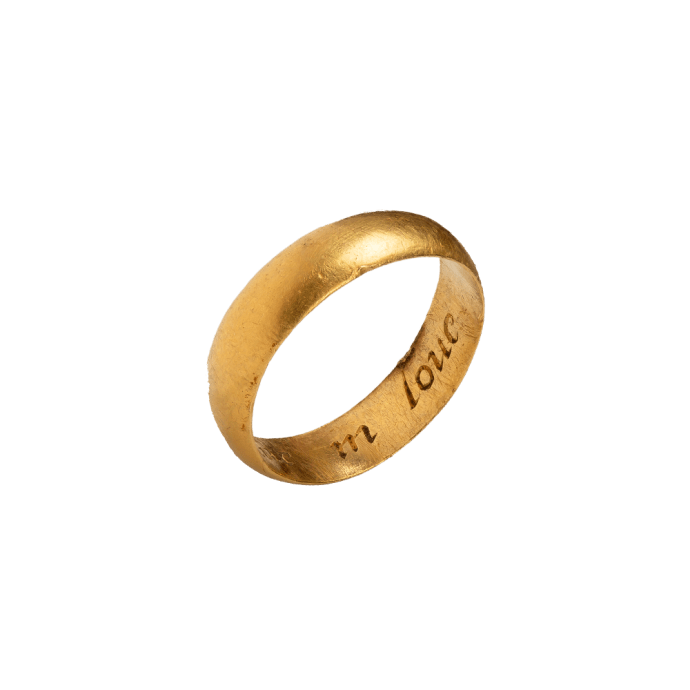


Posy Ring “A knote knit in love”
, England, late 17th century

Posy Ring “A knote knit in love”
Description
Rare posy alluding to the true lover’s knot, a symbol dating back to Antiquity
A wide gold band with D-section and inside the engraved italic inscription “A knote knit in love.” The ring shows signs of wear through age and is in good wearable condition.
Literature:
“Posy rings,” their name deriving from the term poesie or poetry, are rings inscribed with mottos either in prose or verse. They often concealed love messages inside their hoop, like here, which were only known to the giver and recipient. They find mention in the plays of William Shakespeare, such as Hamlet and the Merchant of Venice. Posy rings enjoyed great popularity in Britain throughout the seventeenth and eighteenth centuries. They were traditionally exchanged between relatives, friends, lovers, and were often given as betrothal or wedding rings.
The posy here, “A knote knit in love,” appears to be rare and alludes to the true lover’s knot. The Heracles knot, a symbol which goes back to Antiquity, was thought to be insoluble and is found in many cultures. The knot in this prose symbolizes the inextricable link and eternal bond between two loved ones, suggesting it was given as a wedding ring. Joan Evans (1931, p. 65) records a related posy, reading “Knotts of love are knit above,” and “Knit in one by Christ alone.”
For a history of posy rings with extensive examples ranging from the medieval period to eighteenth century, see: Scarisbrick 2021 and further information on posies: Evans, 1931; Anon., A Garland of Love: A Collection of Posy-Ring Mottoes, London 1907; Dalton 1912, pp. 174 ff.; Scarisbrick 2007, pp. 74 ff., Taylor and Scarisbrick 1978; Oman 1974, pp. 39 ff.